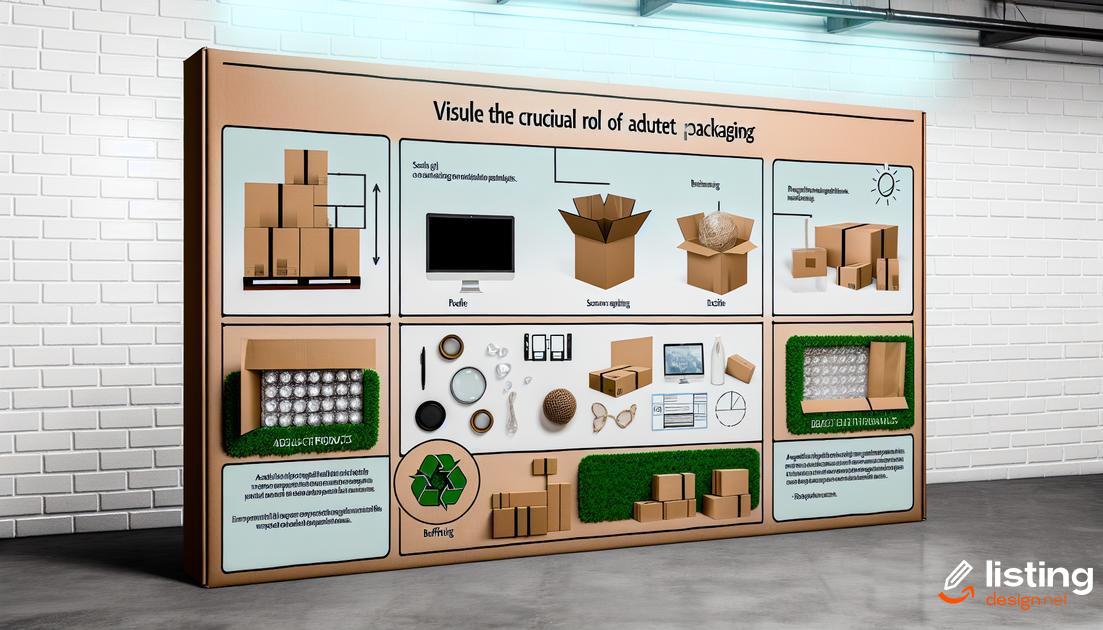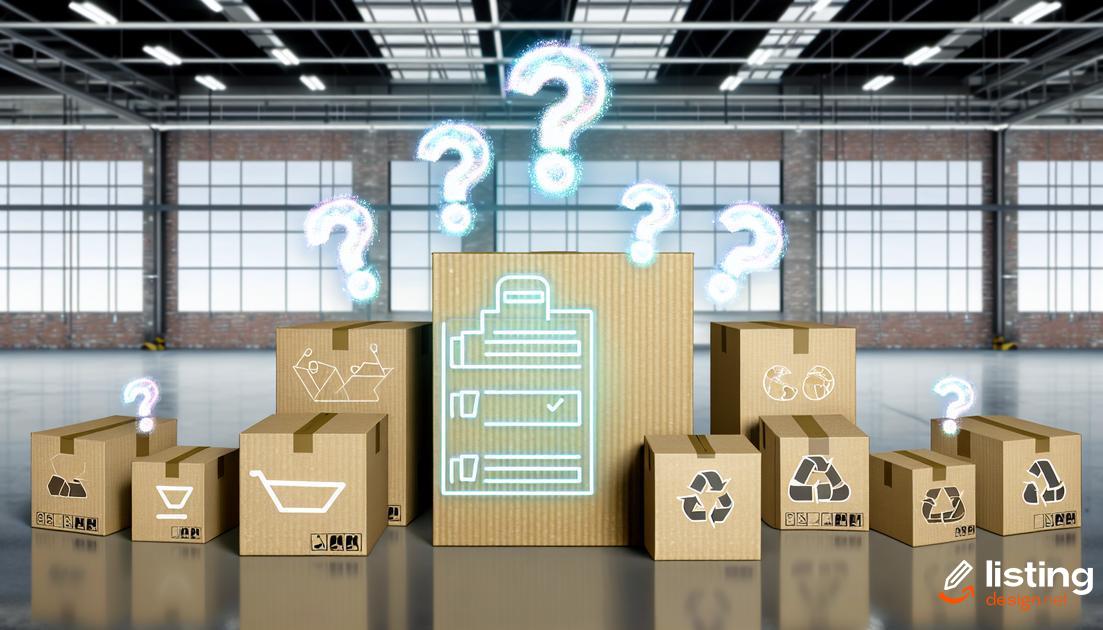Understanding Amazon packaging rules and guidelines is essential for any seller looking to thrive on the platform. Without adhering to Amazon’s strict packaging standards, you could face delays, penalties, or even suspension. This guide will walk you through everything you need to know to ensure your products are properly packaged, labeled, and compliant with all of Amazon’s requirements. From the different types of acceptable packaging to the best practices that can help you avoid common pitfalls, we’ve got you covered.
Table of Contents
Introduction to Amazon Packaging Standards
The Amazon packaging standards are essential for ensuring that products reach customers in perfect condition. Adhering to these standards is crucial for maintaining positive customer reviews and avoiding penalties. To start, it’s important to understand that every product sold on Amazon needs to conform to specific packaging guidelines.
A major component of these standards is the selection of appropriate packaging materials. Amazon requires sellers to use durable materials that can withstand the rigors of shipping. This includes choosing the right type of box, void fill, and protective wrapping to prevent damage during transit.
Amazon also emphasizes the importance of correct labeling. Each package must have clearly visible barcodes and product information to ensure smooth processing in Amazon’s fulfillment centers. Incorrect or missing labels can lead to delays and potential fines.
It’s also vital to consider the environmental impact of packaging. Amazon encourages the use of eco-friendly materials whenever possible. Sellers should look for opportunities to reduce waste and use recyclable content.
Understanding and implementing Amazon’s packaging standards not only helps in meeting customer expectations but also plays a significant role in the operational efficiency of sellers. Proper packaging reduces the likelihood of product returns and improves overall customer satisfaction.
Why Proper Packaging is Crucial

Ensuring proper packaging is a critical factor when selling on Amazon. Adhering to Amazon’s packaging rules helps safeguard products during transit, minimizing damage and defects. This not only enhances customer satisfaction but also ensures compliance with Amazon’s stringent standards. If packages arrive damaged, it reflects poorly on both the seller and Amazon, potentially leading to negative reviews and returns. Proper packaging also optimizes storage and shipping costs within Amazon’s fulfillment centers, where efficient space utilization is key. Additionally, poor packaging can result in non-compliance penalties, adversely impacting a seller’s account standing. To avoid these issues, sellers must use durable materials and follow Amazon’s guidelines closely.
Amazon’s Packaging Types
Amazon offers a variety of packaging types to ensure products reach customers in perfect condition. The packaging options include Frustration-Free Packaging (FFP), Ships In Own Container (SIOC), and Prep-Free Packaging (PFP). Each of these types aims to minimize waste and protect products during transit.
Frustration-Free Packaging (FFP) is designed to be easy to open, recyclable, and to reduce packaging waste. Products in FFP are shipped in their original packaging, eliminating the need for an additional shipping box.
Ships In Own Container (SIOC) means that the product’s packaging is sturdy enough to be shipped without an additional outer box. This type reduces the use of extra materials and makes the unboxing process simpler for the customer.
Prep-Free Packaging (PFP) involves products that do not require any additional preparation or packaging by Amazon before being sent to customers. This type of packaging streamlines the fulfillment process and ensures that products are protected and ready for immediate shipment.
Choosing the right packaging type is essential for complying with Amazon’s guidelines and improving customer satisfaction. Each packaging type has specific benefits and is suited to different types of products, helping sellers to efficiently meet Amazon’s standards and deliver a great unboxing experience.
Labeling Requirements

Amazon has specific labeling requirements that must be followed to ensure smooth processing within their logistics network. These requirements include proper placement, clarity, and durability of labels.
Firstly, every product must have a scannable barcode, such as a UPC, EAN, or ISBN. This barcode should be placed on a flat surface and avoid edges, seams, or curves. Moreover, it should not be obscured by any packaging materials.
Shipping labels for parcels must contain all necessary information, including the origin address, destination address, and tracking number. Ensure that these labels are affixed securely and are easily readable.
Additionally, if you are using Amazon’s FBA (Fulfillment by Amazon) services, you must use the labels provided by Amazon. These labels should include the FBA shipment ID and should be placed correctly as specified in Amazon’s guidelines.
It is also vital to note that certain products might have specific labeling rules. For example, items that are fragile, hazardous, or sell-by date sensitive may require additional labels to indicate handling instructions.
All labels should be printed clearly and remain legible throughout the shipping process. Using high-quality printers and materials can help ensure that labels do not fade, smear, or get damaged during transit.
By adhering strictly to Amazon’s labeling requirements, sellers can avoid delays, fines, or even shipment rejections. Proper labeling not only helps in efficient product tracking but also in maintaining the overall integrity of the packaging.
Protective Packaging Materials
Amazon mandates the use of protective packaging materials to ensure that all items arrive at their destination undamaged. Proper protective materials absorb shock and reduce movement during transit, minimizing the risk of damage. Some commonly used materials include:
- Bubble Wrap: Provides cushioning and protection for fragile items.
- Air Pillows: Lightweight and effective for filling voids in boxes.
- Foam Sheets: Ideal for wrapping delicate electronics and preventing scratches.
- Cardboard Inserts: Offer structural support and keep items in place.
- Packing Paper: Versatile for wrapping items and filling spaces in packaging.
When choosing protective packaging materials, make sure they are appropriate for your product’s size and fragility. Using the right materials not only protects the item but also enhances customer satisfaction by ensuring their purchase arrives intact.
Compliance and Penalties

Adhering to Amazon’s packaging rules is crucial for sellers to avoid penalties and ensure smooth operations. Non-compliance can result in various penalties affecting your seller account and overall business performance.
Amazon may enforce chargebacks for non-compliant packaging, meaning you will incur additional fees that can significantly impact your profit margins. Severe breaches might lead to account suspension or even permanent removal from the marketplace.
It’s imperative to stay updated with Amazon’s guidelines since packaging requirements may frequently change. Routinely review the guidelines and audit your packaging processes to ensure full compliance.
Consider investing in training for your staff and using specialized software to monitor and manage packaging compliance efficiently. By doing so, you can avoid potential penalties and maintain a healthy relationship with Amazon.
Remember, following Amazon’s packaging guidelines does not just avert penalties, but also enhances the customer experience, contributing to positive reviews and repeat business.
Best Practices for Sellers
Ensuring your packaging adheres to Amazon’s guidelines is vital for maintaining seller performance and customer satisfaction.
Optimize Packaging Size:
Choose appropriate packaging sizes to reduce shipping costs and minimize damage risk. Oversized packages can lead to increased fees and inefficient storage.
Use Durable Materials:
Select materials that can withstand transit challenges. Utilize sturdy boxes, cushioning, and sealing supplies to protect items.
Label Correctly:
Make sure labels are accurate and visible. Use clear, scannable barcodes and ensure no labels cover package seams or product information.
Follow FNSKU Guidelines:
Each product requires an FNSKU label, which should be placed on a flat surface for easy scanning.
Minimize Packaging Waste:
Utilize eco-friendly materials and avoid excess wrapping to align with sustainability goals and reduce customer frustration.
Test Packaging:
Conduct drop tests to ensure your packaging can handle rough handling during shipping.
FAQs on Amazon Packaging

When it comes to Amazon’s packaging standards, many sellers have questions. To help, we compiled a list of frequently asked questions.
What packaging materials are allowed?
Amazon allows several types of packaging materials, including corrugated fiberboard, paper, and certain plastics. Materials must be durable and suit the product’s weight and fragility.
Does Amazon require specific label placement?
Yes, Amazon has clear guidelines on label placement. Labels should be easily scannable and not placed on box seams or corners.
Are there penalties for incorrect packaging?
Penalties for incorrect packaging can include fines and suspension of seller privileges. To avoid this, it’s essential to follow Amazon’s packaging guidelines closely.
For more information, consult Amazon’s official documentation or the Seller Central portal.


